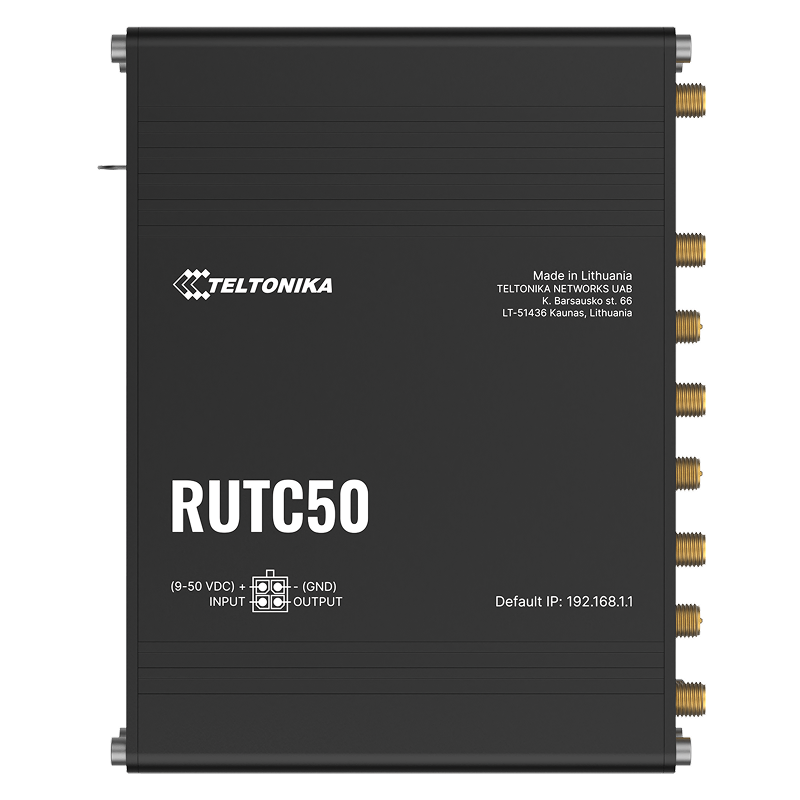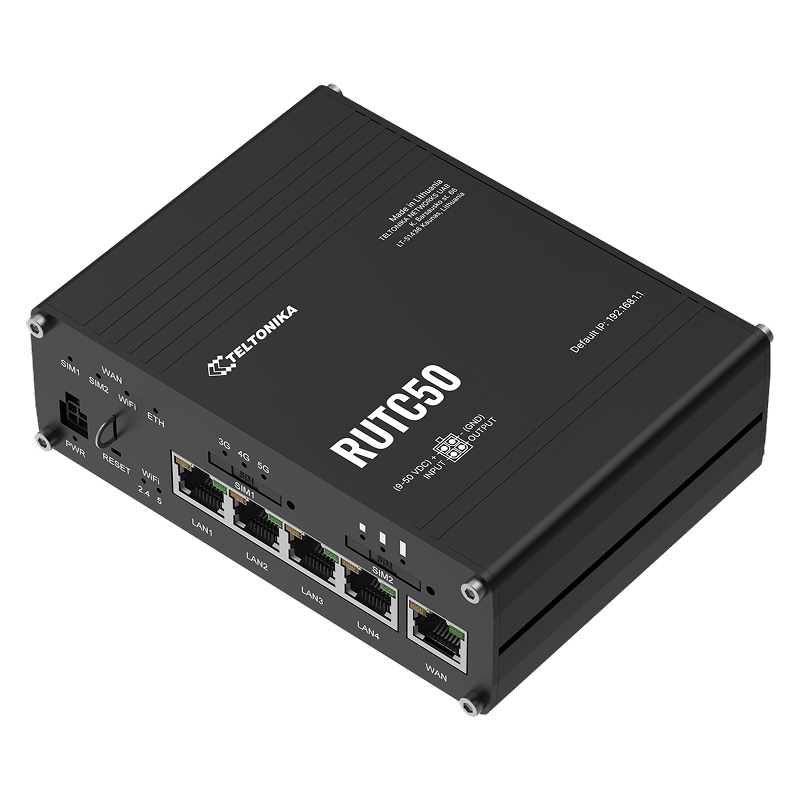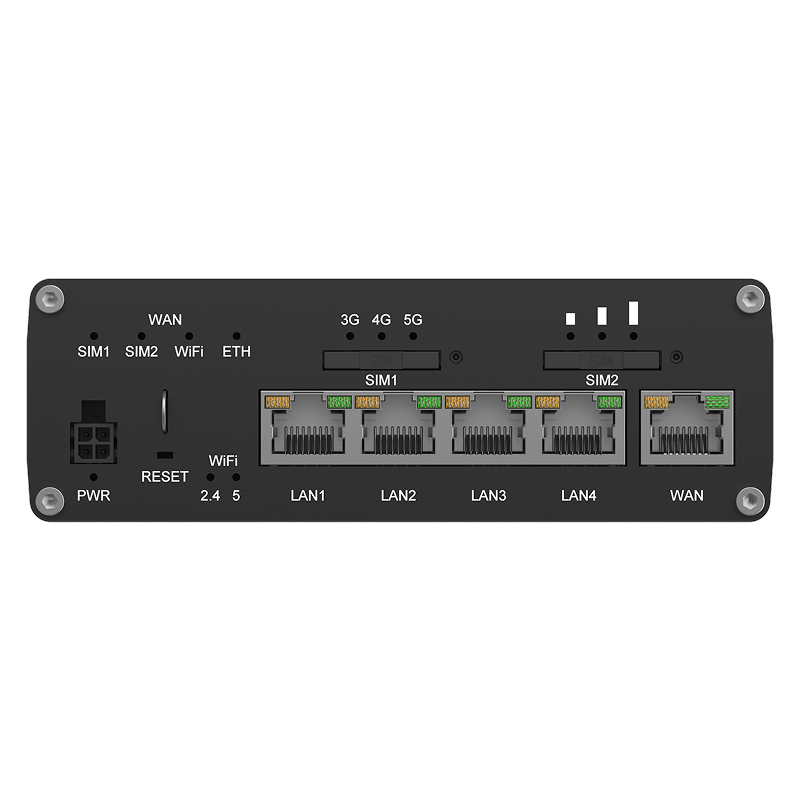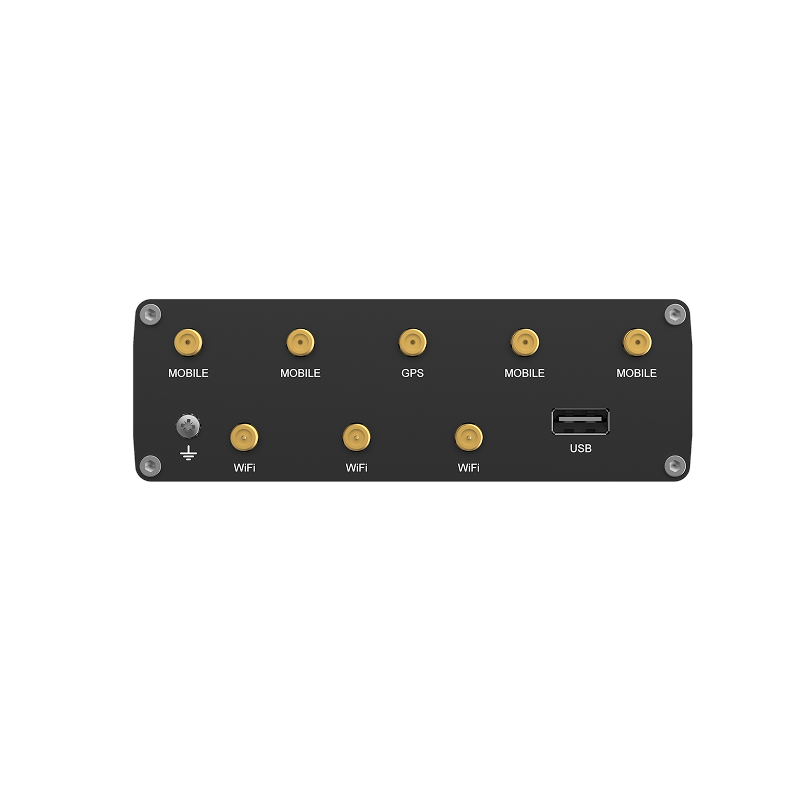



Tekniska specifikationer
Wireless
Wireless mode: 802.11b/g/n/ac/ax (Wi-Fi 6) with data transfer rates up to 2402 Mbps on 5 GHz, 576 Mbps on 2.4 GHz (Dual Band, MU-MIMO)
Wi-Fi Security: WPA2-Enterprise: PEAP, WPA2-PSK, WPA-EAP, WPA-PSK, WPA3-SAE, WPA3-EAP, OWE;
AES-CCMP, TKIP, Auto cipher modes, client separation, EAP-TLS with PKCS#12 certificate, option to disable auto-connect, 802.11w Protected Management Frames (PMF)
SSID/ESSID: ESSID hidden mode (stealth mode)
Wi-Fi users: Up to 512 simultaneous connections
Wireless connectivity features: Wireless mesh (802.11s), fast roaming (802.11r), BSS transition management (802.11v), radio access metering (802.11k)
Wireless MAC filter: Allow list, block list
Wireless QR code generator: Scan to automatically connect to the network without having to enter a password
TravelMate: Forwards the Wi-Fi hotspot landing page to a connected device
Wi-Fi Security: WPA2-Enterprise: PEAP, WPA2-PSK, WPA-EAP, WPA-PSK, WPA3-SAE, WPA3-EAP, OWE;
AES-CCMP, TKIP, Auto cipher modes, client separation, EAP-TLS with PKCS#12 certificate, option to disable auto-connect, 802.11w Protected Management Frames (PMF)
SSID/ESSID: ESSID hidden mode (stealth mode)
Wi-Fi users: Up to 512 simultaneous connections
Wireless connectivity features: Wireless mesh (802.11s), fast roaming (802.11r), BSS transition management (802.11v), radio access metering (802.11k)
Wireless MAC filter: Allow list, block list
Wireless QR code generator: Scan to automatically connect to the network without having to enter a password
TravelMate: Forwards the Wi-Fi hotspot landing page to a connected device
Ethernet
WAN: 1 x WAN port 10/100/1000 Mbps, compatible with IEEE 802.3, IEEE 802.3u, 802.3az standards, supports auto MDI/MDIX crossover
LAN: 4 x LAN ports, 10/100/1000 Mbps, compatible with IEEE 802.3, IEEE 802.3u, 802.3az standards, supports auto MDI/MDIX crossover
LAN: 4 x LAN ports, 10/100/1000 Mbps, compatible with IEEE 802.3, IEEE 802.3u, 802.3az standards, supports auto MDI/MDIX crossover
Network
Routing: Static routing, Dynamic routing (BGP, OSPF v2, RIP v1/v2, EIGRP, NHRP), Policy-based routing
Network Protocol: TCP, UDP, IPv4, IPv6, ICMP, NTP, DNS, HTTP, HTTPS, SFTP, FTP, SMTP, SSL/TLS, ARP, VRRP, PPP, PPPoE, UPNP, SSH, DHCP, Telnet, SMPP, SNMP, MQTT, Wake On Lan (WOL), VXLAN
VoIP passthrough: H.323 and SIP-alg protocol NAT helpers, enabling correct routing of VoIP packets
Connection monitoring: Ping reboot, Wget reboot, Periodic reboot, LCP and ICMP for link inspection
Firewall: Port forwarding, traffic rules, custom rules, TTL target adjustment
Firewall status: View all firewall statistics, rules, and rule counters
Port Management: View device ports, enable/disable them, turn auto-configuration on/off, change transmission speed, etc.
Network topology: Visual representation of the network, showing which devices are connected to which
DHCP: Static and dynamic IP assignment, DHCP relay, DHCP server configuration, status, static addresses with MAC wildcards
QoS / Smart Queue Management (SQM): Prioritization of traffic based on source/destination, service, protocol or port, WMM, 802.11e
DDNS: Supports over 25 service providers, ability to manually configure others
DNS over HTTPS: DNS-over-HTTPS proxy enables secure DNS resolution over HTTPS
Network backup: Wi-Fi WAN, cellular, VRRP, wired options that can be used for automatic failover
Load balancing: Balances internet traffic across multiple WAN connections
Network Protocol: TCP, UDP, IPv4, IPv6, ICMP, NTP, DNS, HTTP, HTTPS, SFTP, FTP, SMTP, SSL/TLS, ARP, VRRP, PPP, PPPoE, UPNP, SSH, DHCP, Telnet, SMPP, SNMP, MQTT, Wake On Lan (WOL), VXLAN
VoIP passthrough: H.323 and SIP-alg protocol NAT helpers, enabling correct routing of VoIP packets
Connection monitoring: Ping reboot, Wget reboot, Periodic reboot, LCP and ICMP for link inspection
Firewall: Port forwarding, traffic rules, custom rules, TTL target adjustment
Firewall status: View all firewall statistics, rules, and rule counters
Port Management: View device ports, enable/disable them, turn auto-configuration on/off, change transmission speed, etc.
Network topology: Visual representation of the network, showing which devices are connected to which
DHCP: Static and dynamic IP assignment, DHCP relay, DHCP server configuration, status, static addresses with MAC wildcards
QoS / Smart Queue Management (SQM): Prioritization of traffic based on source/destination, service, protocol or port, WMM, 802.11e
DDNS: Supports over 25 service providers, ability to manually configure others
DNS over HTTPS: DNS-over-HTTPS proxy enables secure DNS resolution over HTTPS
Network backup: Wi-Fi WAN, cellular, VRRP, wired options that can be used for automatic failover
Load balancing: Balances internet traffic across multiple WAN connections
Hotspot
Captive portal (hotspot): Internal/external Radius server, Radius MAC authentication, SMS authorization, SSO authentication, internal/external landing pages, walled garden, user scripts, URL parameters, user groups, individual or group restrictions, user management, 9 default themes with the ability to upload/customize your own
Hotspot 2.0: Wi-Fi standard for seamless, secure and automatic connection to trusted networks
Hotspot 2.0: Wi-Fi standard for seamless, secure and automatic connection to trusted networks
VPN
OpenVPN: Multiple clients and servers can run simultaneously, 27 encryption methods
OpenVPN encryption: DES-CBC 64, RC2-CBC 128, DES-EDE-CBC 128, DES-EDE3-CBC 192, DESX-CBC 192, BF-CBC 128, RC2-40-CBC 40, CAST5-CBC 128, RC2-64-CBC 64, AES-128-CBC 128, AES-128-CFB 128, AES-128-CFB1 128, AES-128-CFB8 128, AES-128-OFB 128, AES-128-GCM 128, AES-192-CFB 192, AES-192-CFB1 192, AES-192-CFB8 192, AES-192-OFB 192, AES-192-CBC 192, AES-192-GCM 192, AES-256-GCM 256, AES-256-CFB 256, AES-256-CFB1 256, AES-256-CFB8 256, AES-256-OFB 256, AES-256-CBC 256
IPsec: XFRM, IKEv1, IKEv2, with 14 IPsec encryption methods (3DES, DES, AES128, AES192, AES256, AES128GCM8, AES192GCM8, AES256GCM8, AES128GCM12, AES192GCM12, AES256GCM12, AES128GCM16, AES192GCM16, AES256GCM16)
GRE: GRE tunnel, GRE tunnel over IPsec support
PPTP, L2TP: Client/Server instance can run simultaneously, L2TPv3, L2TP over IPsec support
Stunnel: Proxy for adding TLS encryption to existing clients and servers without code change
DMVPN: Method for scalable IPsec VPNs, phases 2 and 3 and dual hub support
SSTP: SSTP client support
ZeroTier: ZeroTier VPN client support
WireGuard: WireGuard VPN client and server support
Tinc: Tinc offers encryption, authentication, and compression in its tunnels, client, and server support
Tailscale: Tailscale offers speed, stability, and simplicity over traditional VPNs, encrypted peer-to-peer connections with WireGuard
OpenVPN encryption: DES-CBC 64, RC2-CBC 128, DES-EDE-CBC 128, DES-EDE3-CBC 192, DESX-CBC 192, BF-CBC 128, RC2-40-CBC 40, CAST5-CBC 128, RC2-64-CBC 64, AES-128-CBC 128, AES-128-CFB 128, AES-128-CFB1 128, AES-128-CFB8 128, AES-128-OFB 128, AES-128-GCM 128, AES-192-CFB 192, AES-192-CFB1 192, AES-192-CFB8 192, AES-192-OFB 192, AES-192-CBC 192, AES-192-GCM 192, AES-256-GCM 256, AES-256-CFB 256, AES-256-CFB1 256, AES-256-CFB8 256, AES-256-OFB 256, AES-256-CBC 256
IPsec: XFRM, IKEv1, IKEv2, with 14 IPsec encryption methods (3DES, DES, AES128, AES192, AES256, AES128GCM8, AES192GCM8, AES256GCM8, AES128GCM12, AES192GCM12, AES256GCM12, AES128GCM16, AES192GCM16, AES256GCM16)
GRE: GRE tunnel, GRE tunnel over IPsec support
PPTP, L2TP: Client/Server instance can run simultaneously, L2TPv3, L2TP over IPsec support
Stunnel: Proxy for adding TLS encryption to existing clients and servers without code change
DMVPN: Method for scalable IPsec VPNs, phases 2 and 3 and dual hub support
SSTP: SSTP client support
ZeroTier: ZeroTier VPN client support
WireGuard: WireGuard VPN client and server support
Tinc: Tinc offers encryption, authentication, and compression in its tunnels, client, and server support
Tailscale: Tailscale offers speed, stability, and simplicity over traditional VPNs, encrypted peer-to-peer connections with WireGuard
OPC UA
Supported modes: Client, Server
Supported connection types: TCP
Supported connection types: TCP
MODBUS
Supported modes: Server, Client
Supported connection types: TCP, USB
Custom registers: MODBUS TCP custom register block requests, which read/write to a file inside the router, and can be used to extend the functionality of the MODBUS TCP client
Supported data formats: 8-bit: INT, UINT; 16-bit: INT, UINT (MSB or LSB first); 32-bit: float, INT, UINT (ABCD (big-endian), DCBA (little-endian), CDAB, BADC), HEX, ASCII
Supported connection types: TCP, USB
Custom registers: MODBUS TCP custom register block requests, which read/write to a file inside the router, and can be used to extend the functionality of the MODBUS TCP client
Supported data formats: 8-bit: INT, UINT; 16-bit: INT, UINT (MSB or LSB first); 32-bit: float, INT, UINT (ABCD (big-endian), DCBA (little-endian), CDAB, BADC), HEX, ASCII
Data to server
Protocol: HTTP(S), MQTT, Azure MQTT
Data to Server: Extract parameters from multiple sources and different protocols, and send them all to the same server; Custom LUA scripting allows scripts to use the router's Data to Server feature
Data to Server: Extract parameters from multiple sources and different protocols, and send them all to the same server; Custom LUA scripting allows scripts to use the router's Data to Server feature
MQTT Gateway
Modbus MQTT Gateway: Enables sending commands and receiving data from MODBUS server via MQTT broker
DNP3
Supported modes: Station, Outstation
Supported connection: TCP
Supported connection: TCP
DLMS/COSEM
DLMS support: DLMS – standard protocol for exchanging data from electricity meters
Supported modes: Client
Supported connection types: TCP, USB
Supported modes: Client
Supported connection types: TCP, USB
API
Teltonika Networks Web API (beta) support: Extend your device's capabilities by using a set of configurable API endpoints to retrieve or modify data. For more information, please see the documentation: https://developers.teltonika-networks.com
Monitoring & Management
WEB UI: HTTP/HTTPS, status, configuration, firmware update, CLI, troubleshooting, multiple event log servers, notifications about available firmware updates, event log, system log, kernel log, Internet status
FOTA: Firmware update from server, automatic notification
SSH: SSH (v1, v2)
SMS: SMS status, SMS configuration
Calls: Restart, status, mobile data on/off, output on/off, answer/hang up with timer, Wi-Fi on/off
Email: Receive emails with status alerts for various services
TR-069: OpenACS, EasyCwmp, ACSLite, tGem, LibreACS, GenieACS, FreeACS, LibCWMP, Friendly tech, AVSystem
MQTT: MQTT Broker, MQTT publisher
SNMP: SNMP (v1, v2, v3), SNMP Trap, brute force protection
JSON-RPC: Management API over HTTP/HTTPS
RMS: Teltonika Remote Management System (RMS)
FOTA: Firmware update from server, automatic notification
SSH: SSH (v1, v2)
SMS: SMS status, SMS configuration
Calls: Restart, status, mobile data on/off, output on/off, answer/hang up with timer, Wi-Fi on/off
Email: Receive emails with status alerts for various services
TR-069: OpenACS, EasyCwmp, ACSLite, tGem, LibreACS, GenieACS, FreeACS, LibCWMP, Friendly tech, AVSystem
MQTT: MQTT Broker, MQTT publisher
SNMP: SNMP (v1, v2, v3), SNMP Trap, brute force protection
JSON-RPC: Management API over HTTP/HTTPS
RMS: Teltonika Remote Management System (RMS)
IoT platforms
ThingWorx: Allows monitoring of: WAN type, WAN IP, mobile carrier name, mobile signal strength, mobile network type
Cumulocity - Cloud of Things: Allows monitoring of: Device model, revision and serial number, WAN type and IP, mobile Cell ID, ICCID, IMEI, connection type, operator, signal strength. Has reboot and firmware upgrade capabilities
Azure IoT Hub: Can be configured with Data to Server to send all available parameters to the cloud. Supports Direct method which enables running RutOS API calls on IoT Hub. Also has Plug and Play integration with Device Provisioning Service which enables zero-touch device provisioning to IoT Hubs
AWS IoT Core: Tools for interacting with the AWS cloud platform. Jobs support: Call the device API with AWS Jobs functionality
Cumulocity - Cloud of Things: Allows monitoring of: Device model, revision and serial number, WAN type and IP, mobile Cell ID, ICCID, IMEI, connection type, operator, signal strength. Has reboot and firmware upgrade capabilities
Azure IoT Hub: Can be configured with Data to Server to send all available parameters to the cloud. Supports Direct method which enables running RutOS API calls on IoT Hub. Also has Plug and Play integration with Device Provisioning Service which enables zero-touch device provisioning to IoT Hubs
AWS IoT Core: Tools for interacting with the AWS cloud platform. Jobs support: Call the device API with AWS Jobs functionality
DOCKERS
Docker support: Supports running isolated applications and services using Docker containers, enabling custom software environments and deploying microservices directly on the device
System properties
CPU: Mediatek, Dual-core, 1.3 GHz, ARM Cortex A53
RAM: 512MB DDR3
FLASH storage: 16 MB serial NOR flash, 512 MB serial NAND flash
RAM: 512MB DDR3
FLASH storage: 16 MB serial NOR flash, 512 MB serial NAND flash
Firmware / Configuration
WEB UI: Update firmware from file, check firmware on server, configuration profiles, backup configuration
FOTA: Firmware update
RMS: Firmware and configuration update for multiple devices at the same time
Keep settings: Update firmware without losing current configuration
Factory Reset: A full factory reset will restore all system settings, including IP address, PIN, and user data to the manufacturer's default configuration.
FOTA: Firmware update
RMS: Firmware and configuration update for multiple devices at the same time
Keep settings: Update firmware without losing current configuration
Factory Reset: A full factory reset will restore all system settings, including IP address, PIN, and user data to the manufacturer's default configuration.
Firmware Customization
Operating system: RutOS (OpenWrt-based Linux OS)
Supported languages: Busybox shell, Lua, C, C++
Development tools: SDK package with build environment provided
GPL Customization: You can create your own customized and branded firmware and web application by changing colors, logos, and other elements of our firmware to suit your or your customers' needs
Package Manager: Package Manager is a service used to install additional software on the device
Supported languages: Busybox shell, Lua, C, C++
Development tools: SDK package with build environment provided
GPL Customization: You can create your own customized and branded firmware and web application by changing colors, logos, and other elements of our firmware to suit your or your customers' needs
Package Manager: Package Manager is a service used to install additional software on the device
Position tracking
GNSS: GPS, GLONASS, BeiDou, Galileo and QZSS
Coordinates: GNSS coordinates via WebUI, SMS, TAVL, RMS
NMEA: NMEA 0183
NTRIP: Networked Transport of RTCM via Internet Protocol (NTRIP) protocol
Server Software: Supported Server Software: TAVL, RMS
Geofencing: Configurable multiple geofence zones
Coordinates: GNSS coordinates via WebUI, SMS, TAVL, RMS
NMEA: NMEA 0183
NTRIP: Networked Transport of RTCM via Internet Protocol (NTRIP) protocol
Server Software: Supported Server Software: TAVL, RMS
Geofencing: Configurable multiple geofence zones
USB
Data speed: USB 2.0
Applications: Samba share, USB-to-serial
External devices: Ability to connect external HDD, flash drive, additional modem, printer, USB-serial adapter
Storage formats: FAT, FAT32, exFAT, NTFS (read only), ext2, ext3, ext4
Applications: Samba share, USB-to-serial
External devices: Ability to connect external HDD, flash drive, additional modem, printer, USB-serial adapter
Storage formats: FAT, FAT32, exFAT, NTFS (read only), ext2, ext3, ext4
Input / Output
Input: 1 x digital input, 0–6 V detected as logic low, 8–50 V detected as logic high
Output: 1 x digital output, open collector output, max 50 V, 300 mA
Events: Email, RMS, SMS
I/O juggler: Allows you to set certain I/O conditions to initiate events
Output: 1 x digital output, open collector output, max 50 V, 300 mA
Events: Email, RMS, SMS
I/O juggler: Allows you to set certain I/O conditions to initiate events
Power supply
Connector: 4-pin industrial DC power connector
Input voltage range: 9–50 VDC, reverse polarity protection, surge/transient protection
PoE (passive): Ability to supply power via the LAN1 port, not compatible with IEEE802.3af, 802.3at and 802.3bt standards, Mode B, 9–30 VDC (Available from: HW revision 0003, batch number 007)
Power consumption: Sleep: < 4.5 W, Max: < 13.5 W
Input voltage range: 9–50 VDC, reverse polarity protection, surge/transient protection
PoE (passive): Ability to supply power via the LAN1 port, not compatible with IEEE802.3af, 802.3at and 802.3bt standards, Mode B, 9–30 VDC (Available from: HW revision 0003, batch number 007)
Power consumption: Sleep: < 4.5 W, Max: < 13.5 W
Physical interfaces
Ethernet: 5 x RJ45 ports, 10/100/1000 Mbps
I/O: 1 x digital input, 1 x digital output on 4-pin power connector
Status LEDs: 4 x WAN status LEDs, 3 x mobile connection type, 3 x mobile connection strength, 8 x LAN status, 1 x power, 2 x 2.4 GHz and 5 GHz Wi-Fi, 2 x WAN status
SIM: 2 x SIM card slots (Mini SIM - 2FF), 1.8 V/3 V, external SIM holders, eSIM (optional - requires different hardware; contact your sales representative)
Power: 1 x 4-pin power connector
Antennas: 4 x SMA for cellular, 3 x RP-SMA for Wi-Fi, 1 x SMA for GNSS
USB: 1 x USB A port for external devices
Reset: Button for restart/reset to user default/factory reset
Other: 1 x ground screw
I/O: 1 x digital input, 1 x digital output on 4-pin power connector
Status LEDs: 4 x WAN status LEDs, 3 x mobile connection type, 3 x mobile connection strength, 8 x LAN status, 1 x power, 2 x 2.4 GHz and 5 GHz Wi-Fi, 2 x WAN status
SIM: 2 x SIM card slots (Mini SIM - 2FF), 1.8 V/3 V, external SIM holders, eSIM (optional - requires different hardware; contact your sales representative)
Power: 1 x 4-pin power connector
Antennas: 4 x SMA for cellular, 3 x RP-SMA for Wi-Fi, 1 x SMA for GNSS
USB: 1 x USB A port for external devices
Reset: Button for restart/reset to user default/factory reset
Other: 1 x ground screw
Physical specifications
Housing material: Anodized aluminum housing and panels
Dimensions (W x H x D): 130.4 x 42.6 x 103.4 mm
Weight: 452g
Mounting options: DIN rail, wall mount, flat surface (all require additional kit)
Dimensions (W x H x D): 130.4 x 42.6 x 103.4 mm
Weight: 452g
Mounting options: DIN rail, wall mount, flat surface (all require additional kit)
Operating environment
Operating temperature: -40°C to 75°C
Operating humidity: 10% to 90% non-condensing
Ingress Protection rating: IP30
Operating humidity: 10% to 90% non-condensing
Ingress Protection rating: IP30
Regulatory Approvals & Type Approvals
Regulatory: REACH, RoHS, CE, UKCA, CB
Vehicle: ECE R118, ECE R10 (E-mark)
Vehicle: ECE R118, ECE R10 (E-mark)
EMC Emissions & Immunity
Standards: EN 55032:2015 + A11:2020 + A1:2020
EN 55035:2017 + A11:2020
EN 61000-3-3:2013 + A1:2019 + A2:2021
EN IEC 61000-3-2:2019 + A1:2021
EN 301 489-1 V2.2.3
EN 301 489-3 V2.3.2
EN 301 489-17 V3.2.4
EN 301 489-19 V2.2.1
EN 301 489-52 V1.2.1
EN 55035:2017 + A11:2020
EN 61000-3-3:2013 + A1:2019 + A2:2021
EN IEC 61000-3-2:2019 + A1:2021
EN 301 489-1 V2.2.3
EN 301 489-3 V2.3.2
EN 301 489-17 V3.2.4
EN 301 489-19 V2.2.1
EN 301 489-52 V1.2.1
RF
Standards: EN 300 328 V2.2.2
EN 300 440 V2.2.1
EN 301 893 V2.1.1
EN 303 413 V1.2.1
EN 301 908-1 V15.2.1
EN 301 908-2 V13.1.1
EN 301 908-13 V13.2.1
Draft EN 301 908-25 V15.1.1_0.0.21
EN 300 440 V2.2.1
EN 301 893 V2.1.1
EN 303 413 V1.2.1
EN 301 908-1 V15.2.1
EN 301 908-2 V13.1.1
EN 301 908-13 V13.2.1
Draft EN 301 908-25 V15.1.1_0.0.21
Security
Standards: EN IEC 62368-1:2020 + A11:2020
EN IEC 62311:2020
EN IEC 62311:2020
Security (common environments)
Standards: EN IEC 62368-1:2020 + A11:2020
Garanti
2 års fabriksgaranti

5G connection

Wi-Fi 6 technology

Enhanced processing power
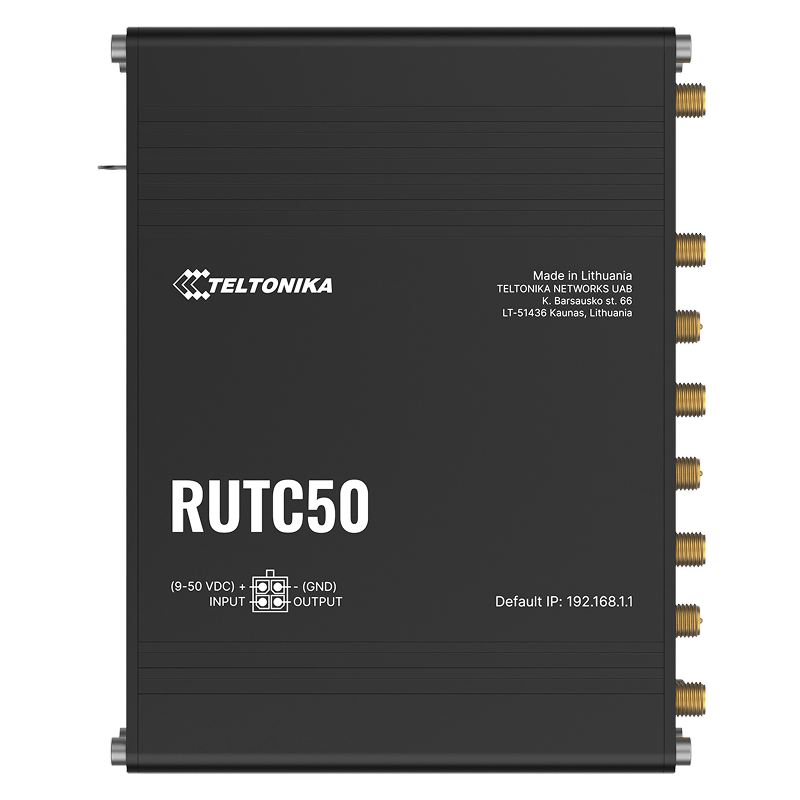
Dual SIM support
Do you want to know more about the product?
Contact us for a demo or if you have any questions.
